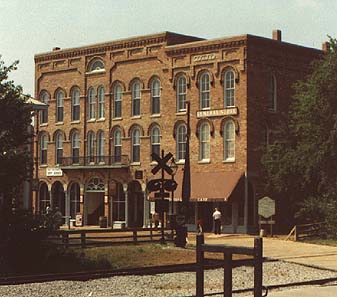| Preservation and Revitalization | Advantages of Preservation |
|---|

Since the Bicentennial year of 1976, the American public has developed a much stronger interest in its history, and in preserving important elements from that history. The preservation of the country's built heritage is an important aspect of that interest. Although some individuals and organizations have been supporting historic preservation activities since much earlier times, it is only in the last two or three decades that is has become a movement evidenced by the general public. Historic preservation now has important and integral activities at the federal and state levels, but is especially dynamic in communities at the local level.
Yet the role of historic preservation is still being defined, and there are many perspectives to be explored. Clem Labine, publisher of the magazine Traditional Building, considered the role of the preservationist in a 1979 article titled "Preservationists Are Un-American":
And then it hit me. The more I inquired into the forces that make preservationists do the things we do, the more I realized that preservation is really un-American....the fact is that preservation goes against the basic historical thrust that built America into a world power. America was built on the concept of the frontier. Land was limitless. Resources were never-ending. The pioneer way was to use it up, throw it away and move west.
...So where do preservationists fit into this scheme of things? Are we merely folks who think that the apex of civilization was reached in the 19th century and are vainly trying to recreate that vanished world? No, we are not making futile, reactionary gestures. Rather, we represent the cutting edge of a true cultural revolution, a revolution generating new perceptions that will have a dramatic impact on America's way of thinking in the next 50 years.
That is why we are un-American. Preservationists oppose the conventional American idea of consuming ever more. We are actually the new wave of pioneer. We are struggling to reverse the "use it up and move on" mentality. We are moving in and picking up the pieces. We are taking individual buildings and whole neighborhoods that have been discarded and trying to make them live again. We are cleaning up after society's litterbugs.1
1 Clem Labine, "Preservationists Are Un-American." Historic Preservation (March 1979) p. 18.
| Preservation and Revitalization | Advantages of Preservation |
|---|
| Historic Districts: Concerns and Comments | Profile of Historic District Commission |
|---|
| Main Street Program | Economic Benefits of Preservation |
|---|
| Adaptive use |
|---|
